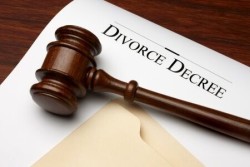California is a “no fault” divorce state. In fact, it was the first state to enact a no fault basis for divorce in 1969. Prior to this change, California state law listed specific faults that, if committed by one of the parties, would be grounds for divorce. These included things such as adultery, extreme cruelty, habitual intemperance, and a number of others. Following enactment of California’s no fault basis, every other state eventually followed suit.
Under our no fault approach, there are only two grounds for divorce and legal separation in California: 1) irreconcilable differences, and 2) permanent legal incapacity to make decisions. Nearly every divorce is filed on grounds of irreconcilable differences. This allows a party to a marriage to pursue a divorce even if her spouse wants to stay married. According to Merriam Webster, irreconcilable means “so different that agreement is not possible.” In a marriage, then, at least one party must believe that agreement on the differences is not possible. Even if the other party states a willingness to agree on differences, they are still irreconcilable if the party of the first part maintains his position.
In the divorce proceeding, the party filing for divorce simply has to tell the court that the marriage needs to be dissolved because there are irreconcilable differences. While the differences are put into the record, no proof of their existence needs to be established. The court just needs to know that one of the parties considers there to be differences, and that they are irreconcilable. The court does have the authority to evaluate each case to reach a conclusion that reconciliation is not possible. In situations where a judge believes reconciliation is possible, he may continue the proceedings for 30 days to see if the parties will reconcile.
Before a divorce petition may be filed, there are residency requirements that must be fulfilled. At least one of the parties must have been a resident of California for six month, and a resident of the county of filing for the immediately preceding three months. If the requirements are not met, the court may refuse to accept the case or will dismiss it when the defect is discovered.
The breakup of a marriage is a difficult life event for both spouses. The attorneys at The Law Offices of Judy L. Burger have extensive experience in divorce matters. Call today to learn how our attorneys can help you and your family: (415) 298-8314.

